When you need to pick the right warp for your next project it isn’t as easy as just grabbing the first cone you can. It takes the right kind of yarn to be able to withstand the tension that the warp will be under. That’s not the only consideration though.
So how do you pick the right warp and what should you be looking for?
This post may contain affiliate links. If you purchase something through these links then I will receive a small commission that helps keep the blog going – at no extra cost to you! Please read our DISCLAIMER for more info. Thanks for the support!
Jump To:
- Warp vs. weft
- Yarn Size Matters
- Warp yarn needs to be strong
- Choose the right yarn material – plant, animal, or oil?
- Color – To dye or not to dye?
Warp vs. weft
Your warp yarn is the foundation for your weaving. It is literally what you build upon – like the foundation of a house. The warp sits vertically in your loom.
Your weft yarn is the part of the weaving that turns it into a fabric. It interacts with the warp and sits horizontally. Remember: Weft Goes Left. If we are sticking with our construction metaphor – it’s the walls.
Weft can be ANYTHING!
I mean that.
You can weave with yarn, fabric, grass, hair, etc. If it’s long enough then you can use it as weft.
Yes, I said hair.
When you need to pick the right warp on the other hand there are a few considerations you need to well… consider.
Yarn Size Matters
The size of your yarn can help determine the EPI of your weaving. If you are not sure about the importance of EPI – then make sure to check out THIS post.
A thicker yarn will have a different EPI than a thinner yarn for the same kind of weaving. When it comes down to it – it is all about the interaction between warp and weft. Thin and thick yarns interact, compress, and behave differently.
Some very common yarns to use for your tapestry warp are either 8/4 cotton, or 8/2 linen. With these size yarns you are able to weave a standard 6 EPI for tapestry with a lot of different weft yarns.
This is a great place to start, but you should always make samples and/ or follow the recommended warp sett from the yarn manufacturer.
Learn more about creating weaving samples here
With that in mind, let’s imagine just 2 out of the endless possibilities you could try:
- You could choose a really thin yarn and set your warp up for tapestry to create a very intricate image. Think of image building in tapestry like pixels. The higher the EPI – the more pixels you have to work with.
- Choose a really thick warp yarn to create wide warp channels. The warp channel within a weaving is created by the high compression of weft over the warp in tapestry. This is largely determined by the size of your warp. You could double your warp or use a thicker warp to create larger channels for a different look.
Warp yarn needs to be strong
If you take a piece of yarn that you want to use for your warp and put it under tension, it should take some strength for it to snap. Now I have never done it – but I would imagine that you can’t just go into a yarn store and start snapping yarn to test it’s strength.
I am not recommending you do this.
If you already own the yarn, though, then snap away!
If your yarn is not strong enough to be warp, but you use it anyway, then either you will have to be very careful about the tension you put it under while weaving or be prepared to fix a lot of broken warps.
No one wants that.
Depending on how easily it breaks – it is possible to use it as warp for a more balanced weave that doesn’t require high tension. Play around with it and as always: SAMPLE FIRST!
So what if you do find yourself in a yarn store and you need to pick the right warp? After you resist the urge to break the yarn in your search for warp then you can look at the material to help you determine if it will work for you.
Break a warp yarn on accident? Learn how to fix broken warps on any loom
Choose the right yarn material – plant, animal, or oil?
Yarn material can be put into three general categories: cellulose, protein, and synthetic. Cellulose yarn is made from plants, protein from animal hair or fur, and synthetic yarns are man made from things like petroleum.
Learn more about the different categories of yarns here
The material that your yarn is made of goes beyond strength when it comes to choosing your warp yarn. This is because the composition of the yarn does not necessarily make it better or worse. What really depends is what you are weaving and how these materials will compliment your creations.
We have already been talking about tapestry, so let’s keep going with that as an example.
Part of the definition of a tapestry is that it is a weft-faced weaving. This means that you will not see the warp at all. Cotton and linen are usually the preferred warp choices for tapestry.
Why?
Cotton and linen yarns are usually really strong and tapestries are under a higher tension than other types of weavings. So here we have the strength needed.
But what else?
They are also usually smooth and allow for the weft to glide over them effortlessly. This smooth texture helps to ensure the weft flows over the warp instead of being caught on it. Cotton yarns also tend to be less expensive. This is perfect for a yarn you are not going to see!
You could also use other types of yarns as long as they are strong enough, but you might be paying more money for yarns that you aren’t even going to see. Using alpaca for your tapestry warp? I am not going to tell you no, but save your money and use the alpaca for a scarf where you can really appreciate it instead.
Learn about weaving with cotton here
Learn about weaving with linen here
Learn about weaving with hemp here
Learn about weaving with wool here
Learn about weaving with alpaca here
Some other considerations when it comes to material are how do you want your weaving to drape? Will your weaving be worn i.e. a scarf? Will it need to be absorbent? Warm? All of these things can be effected by what the yarns you use are made of.
Cotton tends to be softer and linen more stiff (at least until you wash it a few times).
Alpaca and wool are warm and soft, but some people have allergies to wool. Alpaca is usually more expensive.
Protein fibers tend to drape better than cellulose (but not always). Also, un-mercerized yarns drape better than their *mercerized counterparts.
*Mercerization is a treatment applied to some cellulose yarns to help them take dye better. It also makes them shrink less and gives them a shiny appearance.
Learn more about yarn treatments here
Choose your yarn material depending on what you are making and how you want your weaving to behave when it is off your loom.
Color – To dye or not to dye?
Color may or may not play a role in the warp you choose.
A weft-faced weaving (tapestry) by definition is weft-faced. The warp is completely covered up by the weft.
There is a matter of the warp ends to deal with, but there are ways to finish a weaving where you can’t see the warp at all.
Depending on your ideal finishing techniques you may want to consider a dyed warp. If you plan to finish your weaving with the warp completely hidden – then you can use the same warp for every weaving regardless of color.
On the other hand, a balanced or a pattern weave will show the warp.
In this case, the color is very important for the overall look of the weaving. You can either choose a warp color that is the same or similar to the weft so it blends into the overall weaving or an opposing color to make it really stand out.
It all depends on your goals.
When it comes to the color of your yarn you have the option to either purchase pre-dyed yarn or dye it yourself. Either way, it is important to know how much yarn you are going to need if a consistent color is your goal since color can vary between different dye lots. If you purchase a dyed yarn one day and the SAME yarn a week later – it may look different. The image above shows different dye lots on the weft, but it also applies to your warp.
Same goes for dying your own. You are only human and so many things can affect the resulting color of your dyed yarn that it is best to dye it all at once.
This is where planning comes into play.
If you have an unstable foundation – the rest of the house could fall. That is why starting off with the right warp for your weaving is so important.
Do you have a favorite warp yarn? Let me know!
⇣ Love It? Share it! ⇣
You May Also Like
















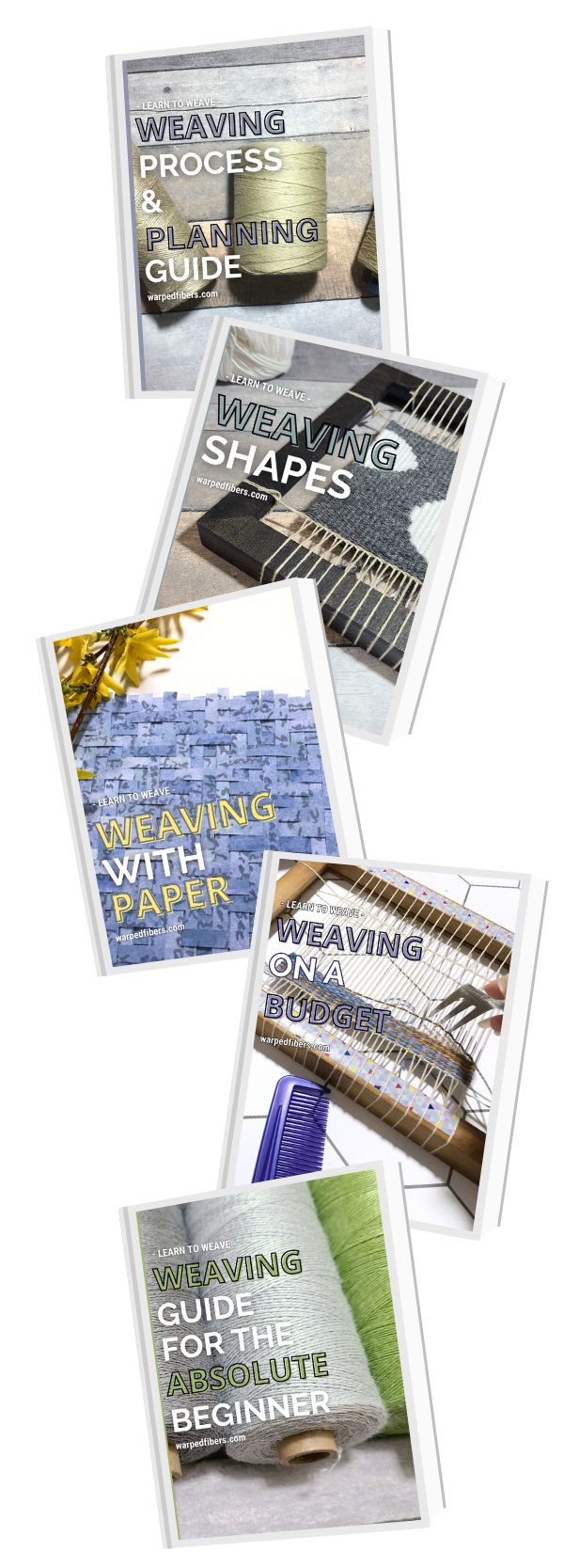
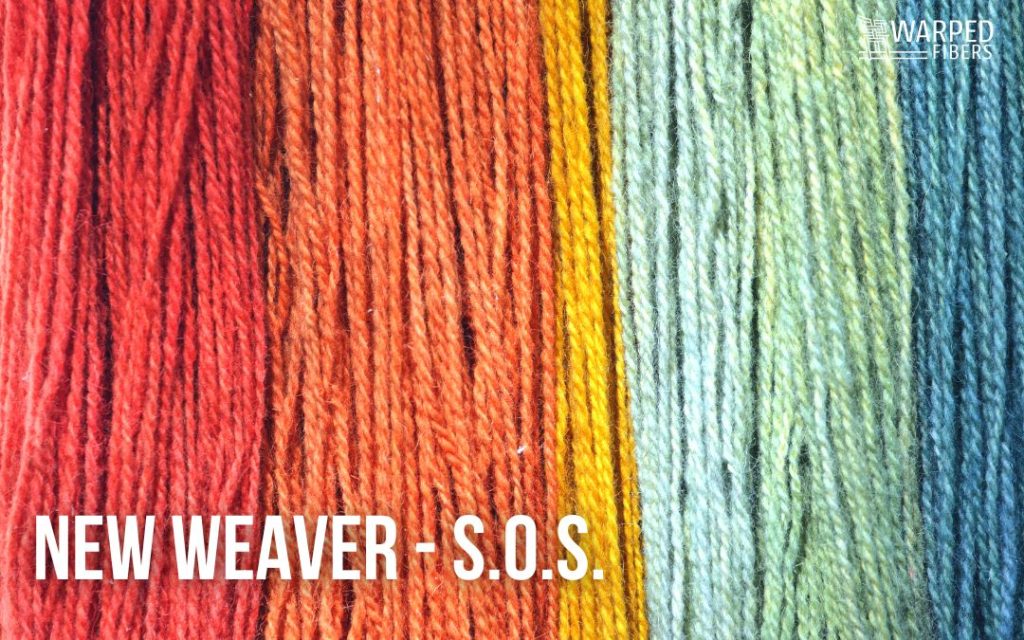

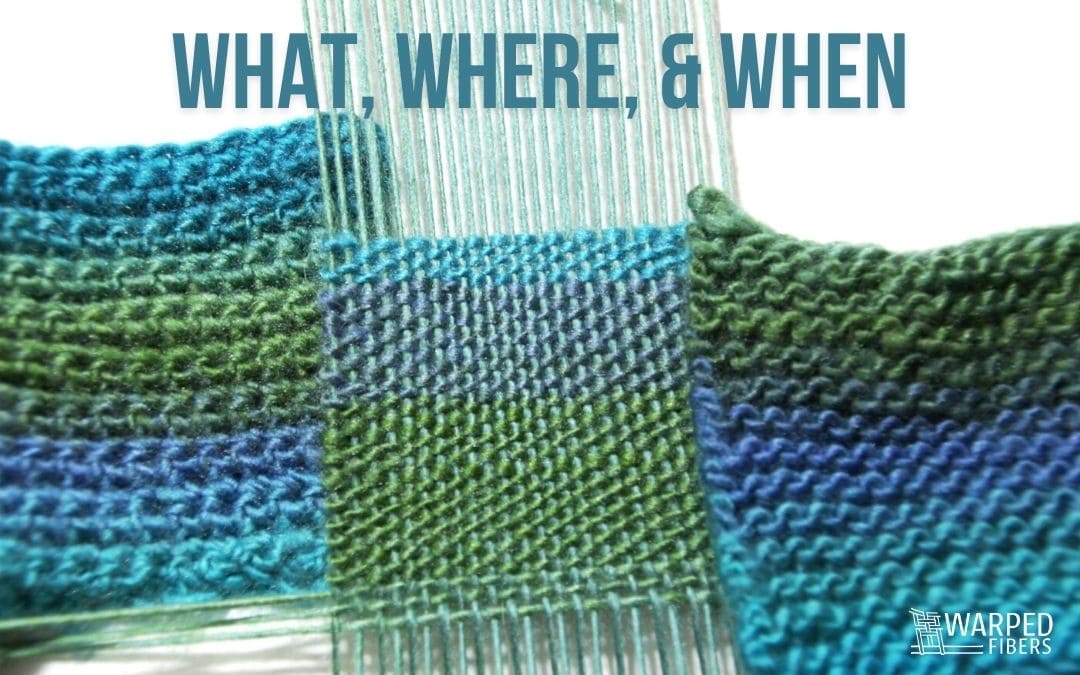

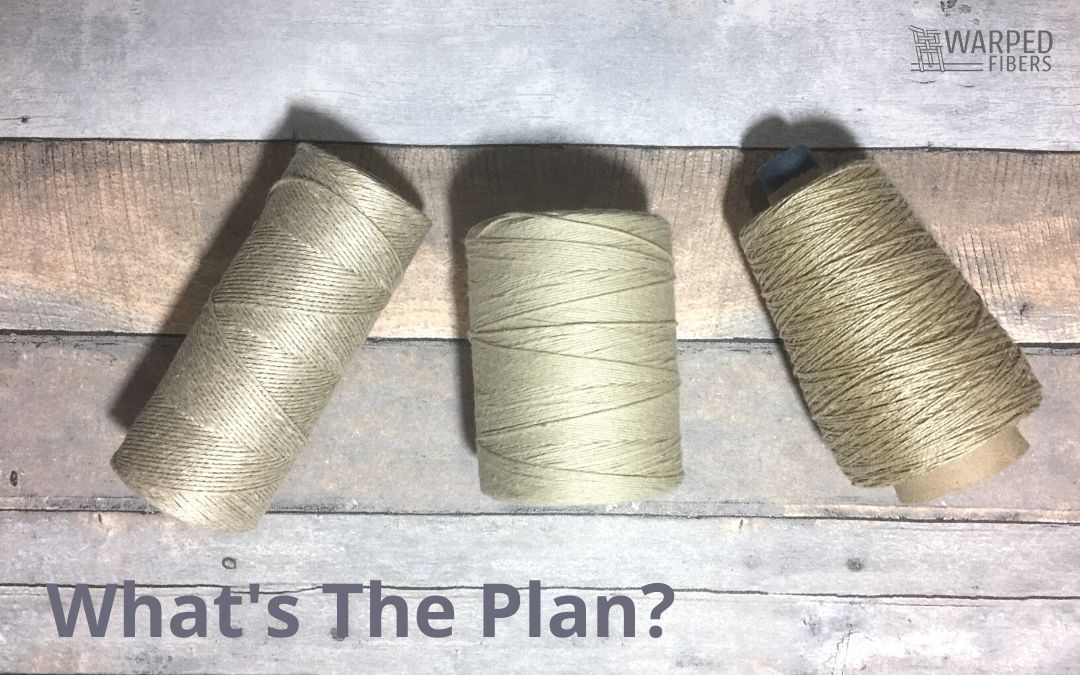

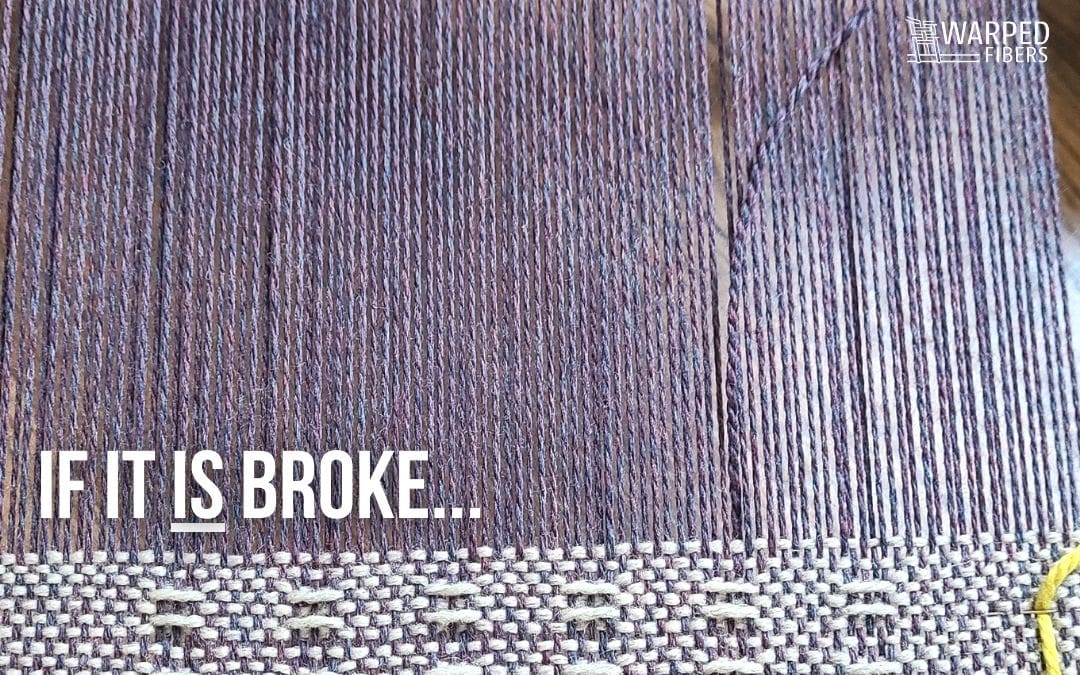

What size and fiber type can I use for a large Navajo rug / blanket loom for warping? Thank you Blessings
It all depends on the size of the weft you also want to use. Check out this post on EPI. Hopefully that can give you a better idea of how your warp and weft will interact!
I live in New York City where is the nearest yarn store?
I’m not familiar with yarn stores in your area. If you google “yarn store New York City” I’m sure you will be able to find a good option. Good luck!
Try Purl Soho. Yarns available in store and online. I visited there a few years ago when I was in town and loved it. They also have a great website with fibre arts patterns supplies and tutorials.
Good to know! I always love finding new places to buy yarn and supplies 🙂